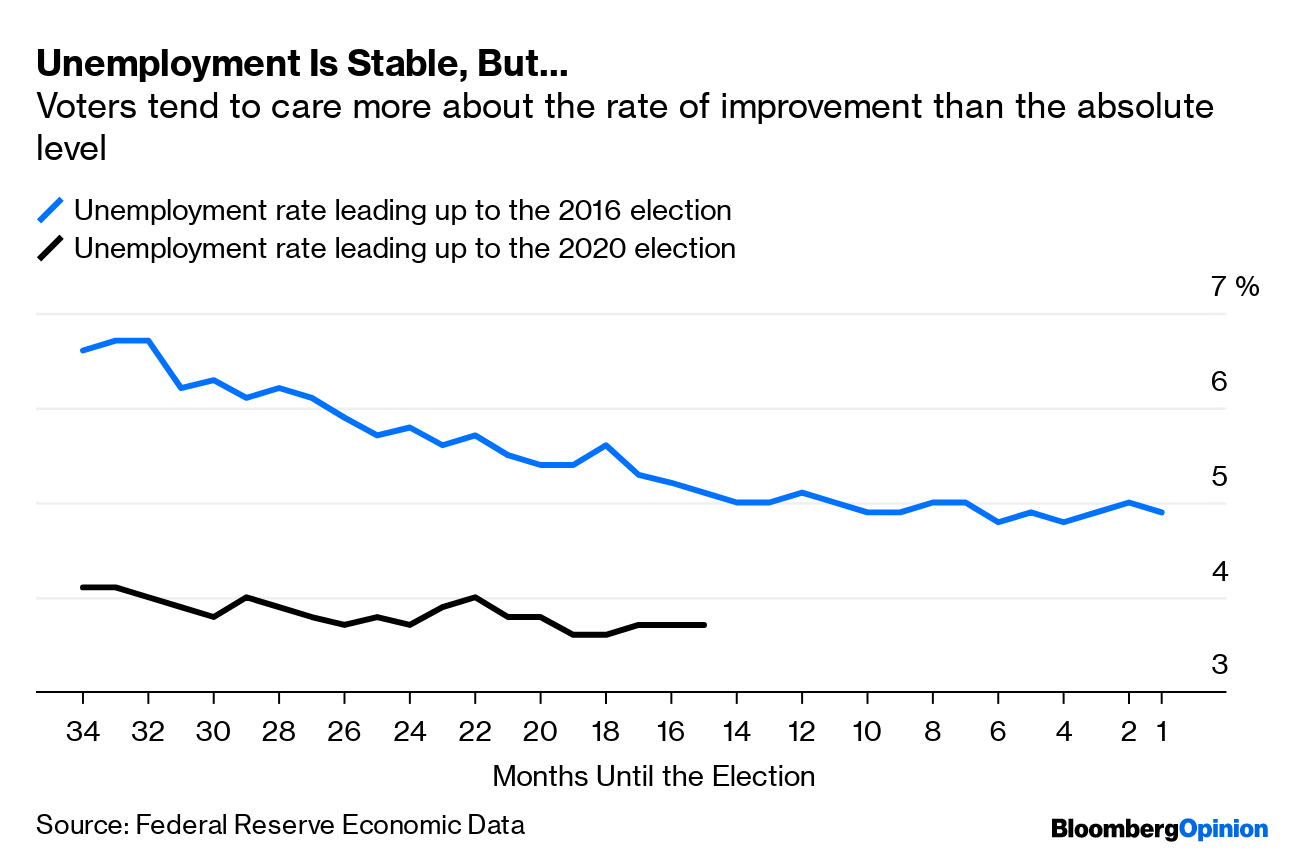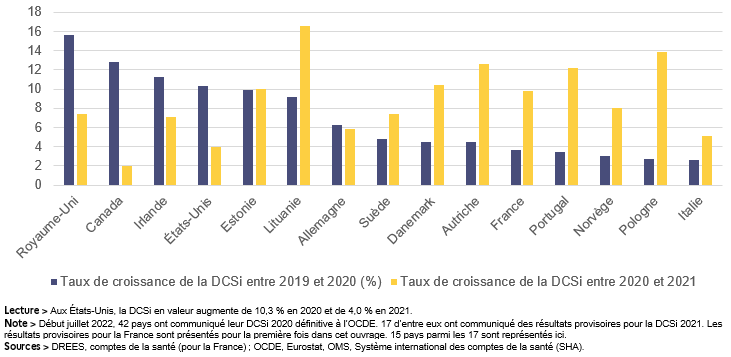Analyzing Economic Trends During The Trump Administration

Table of Contents
Economic Growth and Key Indicators under the Trump Administration
The Trump administration inherited an economy already experiencing moderate growth. Key economic indicators during his presidency provide a mixed picture. Analyzing these requires careful consideration of both positive trends and underlying vulnerabilities.
-
GDP Growth: Annual GDP growth rates fluctuated throughout the Trump presidency. While initial years saw relatively robust growth, exceeding 2% in some quarters, this slowed considerably before the COVID-19 pandemic. Comparing these figures to previous administrations requires controlling for various factors, including global economic conditions and pre-existing economic momentum. The sustained growth rate, or lack thereof, is a subject of ongoing debate among economists.
-
Inflation: Inflation remained relatively low during much of the Trump administration, providing a favorable climate for consumer spending. However, understanding the relationship between low inflation and the implementation of economic policies requires detailed analysis, as other factors, like global oil prices, can play a significant role.
-
Job Creation and Unemployment: One of the administration's touted achievements was sustained job creation and a reduction in unemployment rates. The unemployment rate dropped to a historic low. However, analyzing the quality of jobs created and the distribution of employment gains across different demographics is crucial for a complete picture.
-
Fiscal Stimulus: The Trump administration implemented substantial fiscal stimulus measures, including tax cuts and increased government spending. The impact of these measures on economic growth is a complex issue, with differing opinions on their effectiveness and long-term consequences for the national debt. The debate often revolves around the tenets of Keynesian versus supply-side economics.
The Impact of the Tax Cuts and Jobs Act of 2017
The Tax Cuts and Jobs Act (TCJA) of 2017 was a cornerstone of Trump's economic policy. This significant tax reform significantly lowered both corporate and individual income tax rates.
-
Corporate Tax Cuts: The reduction in the corporate tax rate from 35% to 21% aimed to stimulate business investment and boost economic growth. The actual impact on corporate investment and profitability is a subject of ongoing research, with various studies offering conflicting conclusions.
-
Individual Tax Cuts: The TCJA also included reductions in individual income tax rates and changes to standard deductions. The impact on individual taxpayers varied significantly, depending on income levels and family structures.
-
National Debt: The substantial tax cuts resulted in a significant increase in the national debt. The long-term fiscal implications of this debt increase continue to be debated, with concerns about its impact on future economic growth and government solvency.
-
Supply-Side Economics: The TCJA is often viewed within the context of supply-side economics, the theory that tax cuts incentivize businesses to invest and create jobs. The debate regarding the effectiveness of supply-side economics in this specific context is complex, and economists have offered varying perspectives on its real-world impact.
Trade Policies and Their Economic Consequences
The Trump administration pursued a protectionist trade policy, imposing tariffs on goods imported from China and other countries, initiating what became known as the "trade war."
-
Tariffs and the US-China Trade War: The tariffs aimed to reduce the US trade deficit and protect American industries from foreign competition. The economic consequences of this trade war were significant and far-reaching, affecting businesses, consumers, and global trade relationships.
-
Impact on Businesses and Consumers: American businesses faced increased costs due to tariffs, and consumers experienced higher prices for imported goods. The overall impact on economic growth remains debated. Some argue that it negatively impacted the US economy by reducing international trade and investment.
-
International Relations: The trade disputes initiated by the Trump administration strained relationships with key trading partners, raising concerns about global economic stability and the future of international trade agreements.
-
Protectionism: The long-term effects of protectionist trade policies on global trade and the US economy are still unfolding and remain a subject of considerable study and discussion.
The Economic Impact of the COVID-19 Pandemic
The COVID-19 pandemic drastically altered the economic landscape in 2020, impacting the final years of the Trump administration's economic policies.
-
Economic Contraction: Lockdowns and business closures resulted in a sharp contraction of the US economy, a significant increase in unemployment, and decreased consumer spending.
-
Stimulus Packages: The government responded with unprecedented stimulus packages aimed at mitigating the economic damage. Evaluating the effectiveness of these packages, the extent of their impact on employment, and their long-term consequences remains an area of ongoing research and economic analysis.
-
Economic Recovery: The economic recovery efforts initiated during the final year of the Trump administration laid the groundwork for subsequent economic growth under the Biden administration.
Conclusion
This analysis has explored several key economic trends during the Trump administration, encompassing periods of growth, significant policy changes, and unforeseen global crises. While the administration achieved certain economic milestones, like low unemployment rates fueled partly by pre-existing trends, the long-term effects of its policies, particularly concerning trade and fiscal responsibility, remain a subject of ongoing debate. The impact of the Tax Cuts and Jobs Act, the trade war, and the handling of the COVID-19 pandemic all continue to be analyzed and interpreted by economists with varying perspectives. Understanding the interplay of these factors is crucial for a thorough understanding of this era in American economic history.
For a deeper understanding of the complex interplay of factors shaping the US economy during this period, further research into specific economic indicators and policy analyses related to the Trump administration's economic policies is encouraged. Continue your exploration of this fascinating and crucial period in American economic history.

Featured Posts
-
 Montee Des Depenses De Defense Usa Vs Russie Analyse De John Plassard
Apr 23, 2025
Montee Des Depenses De Defense Usa Vs Russie Analyse De John Plassard
Apr 23, 2025 -
 Brewers Sweep Tigers In Series Finale 5 1
Apr 23, 2025
Brewers Sweep Tigers In Series Finale 5 1
Apr 23, 2025 -
 Lab Owners Guilty Plea Faking Covid 19 Test Results During Pandemic
Apr 23, 2025
Lab Owners Guilty Plea Faking Covid 19 Test Results During Pandemic
Apr 23, 2025 -
 Nine Home Runs Three By Judge Yankees Historic 2025 Season Start
Apr 23, 2025
Nine Home Runs Three By Judge Yankees Historic 2025 Season Start
Apr 23, 2025 -
 Musks Leadership Under Fire State Treasurers Confront Tesla Board
Apr 23, 2025
Musks Leadership Under Fire State Treasurers Confront Tesla Board
Apr 23, 2025
